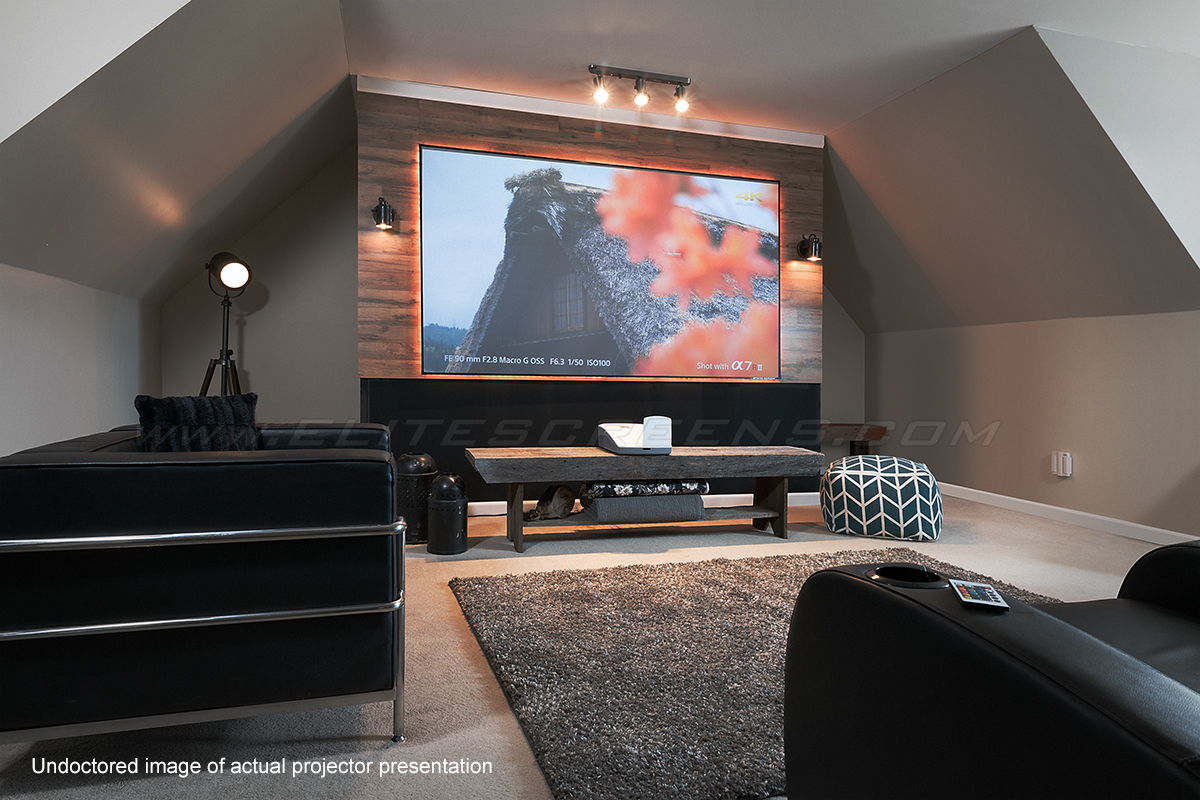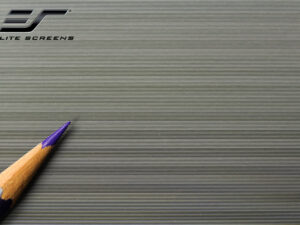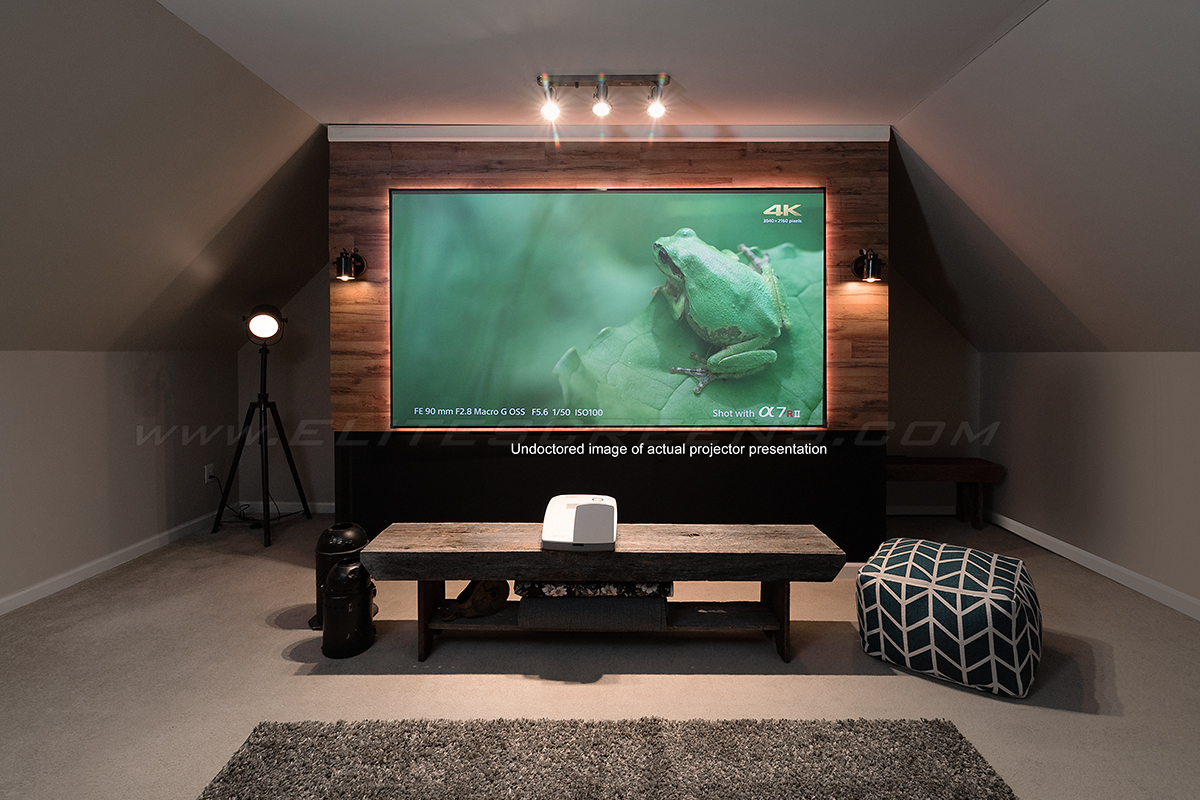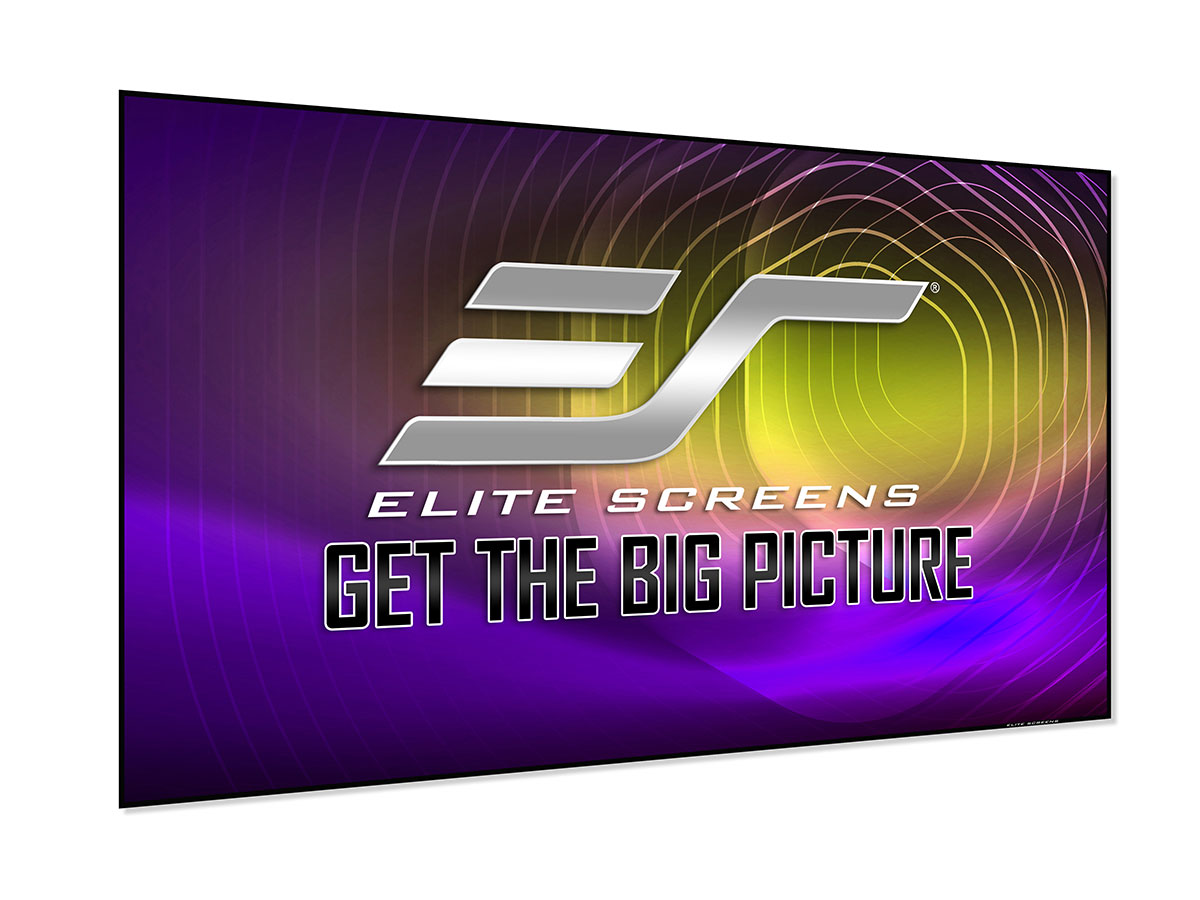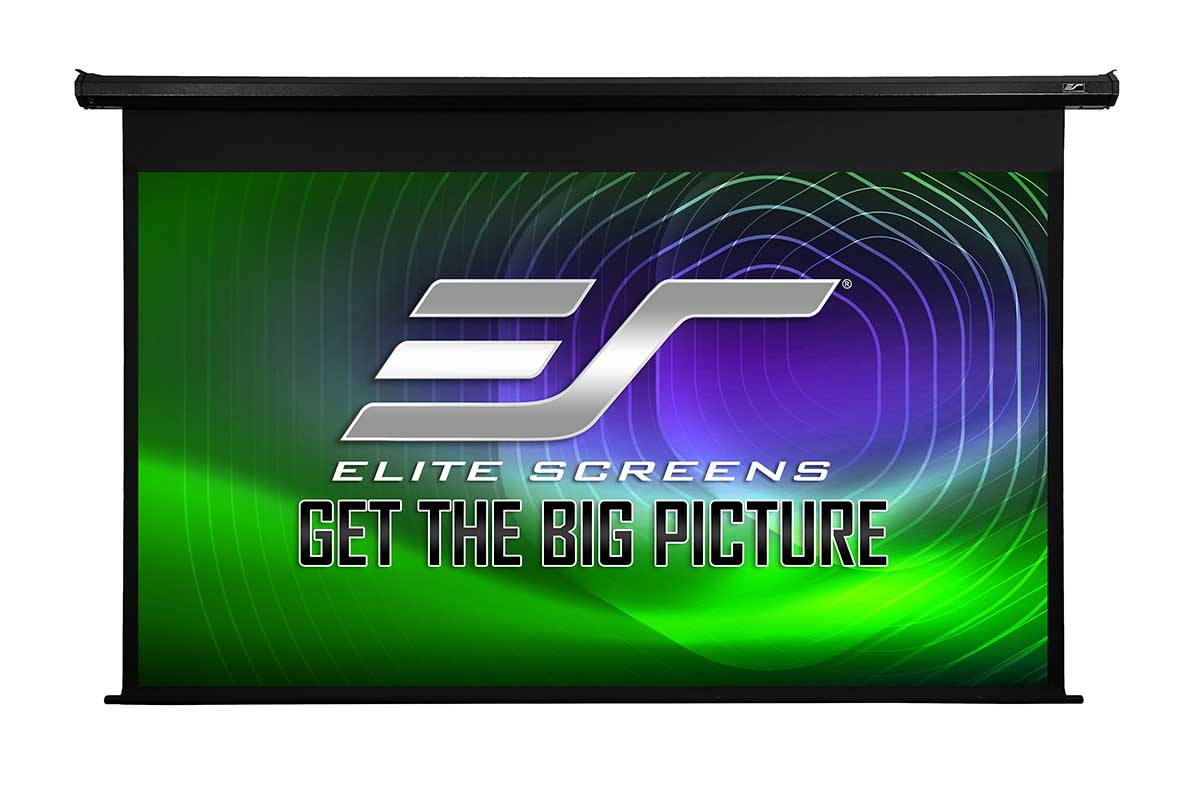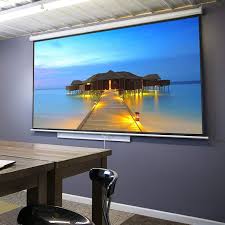Ecoustics Reviews Elite Screens Aeon CLR® Series
Looking for an affordable high-performance CLR or ALR screen for your UST Projector? The Elite Screens Aeon CLR might be the one you want.
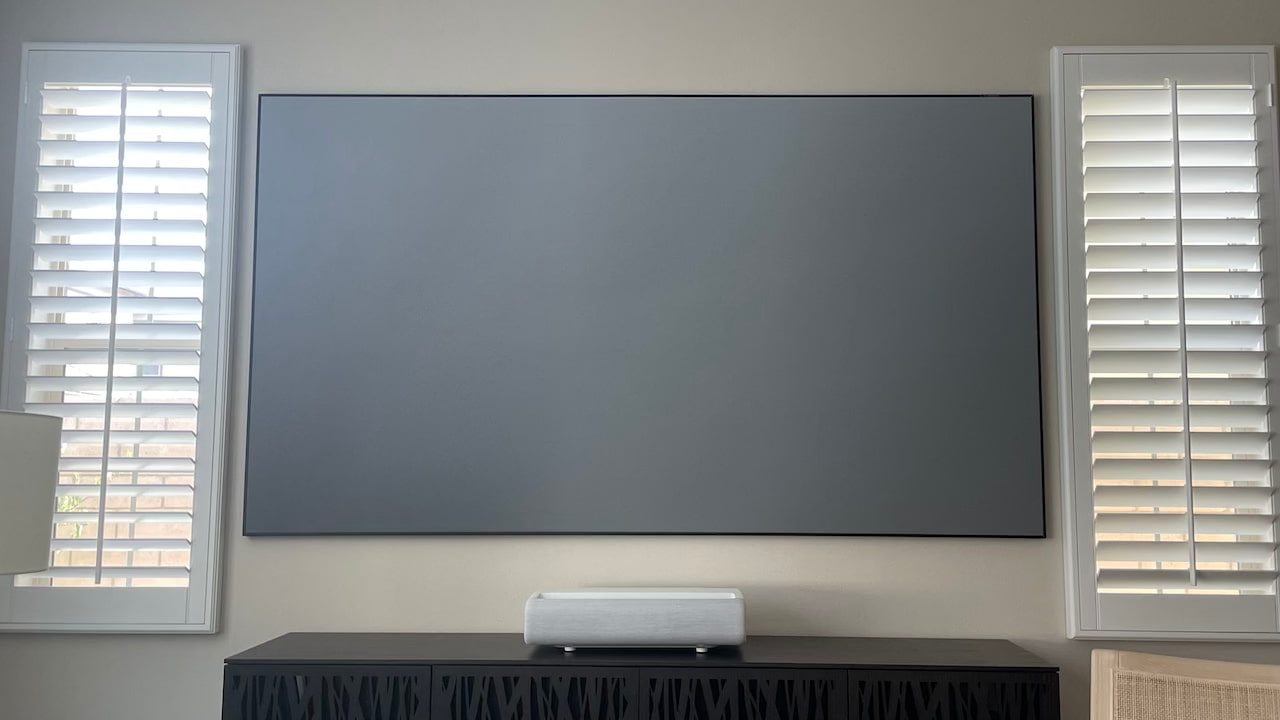
We think it is reasonable to assume that most people choosing an ultra short throw (UST) projector and screen are probably buying a projection system for the first time. The UST category has exploded this year and projectors have become price competitive in the 90 to 130-inch category. Established screen manufacturers like Elite Screens, Stewart, and Screen Innovations jumped on the opportunity to sell to new home theater customers and products like the Elite Screens Aeon CLR Series UST Screen make a lot of sense.
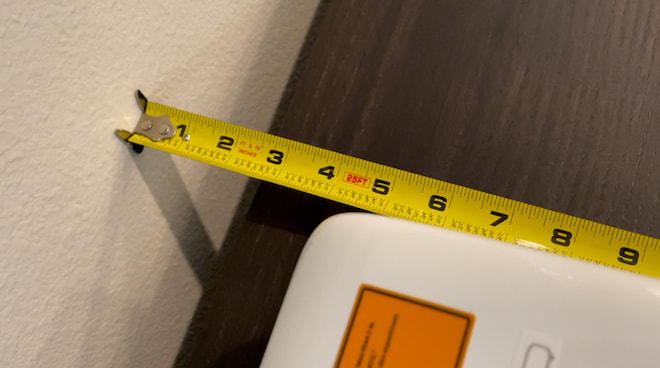
Some background first, if you are new to UST technology.
Ultra short throw projectors are placed just below the screen; in most cases between 12-20″ from the wall itself. They project images at a very steep viewing angle and are much more convenient and easier to setup as opposed to their regular (long throw) projector cousins.
That doesn’t mean that you don’t have to calibrate them, however, and we highly recommend learning how to do this yourself or making sure that your dealer is properly trained in projector calibration.
Like any projector, color accuracy, image brightness, contrast, and sharpness are less than optimum out of the box and require some effort to dial in properly. Don’t let any salesman convince you that UST image quality is perfect out of the box — it surely isn’t.
The other important part of the equation is the screen.
Yes — you need a screen.
UST projectors may be advertised as not needing a screen, but a bare wall won’t cut it. A screen will make a significant difference, especially when you have to deal with ambient light in your room. Most consumers are not setting these up in dedicated home theater rooms and will have to deal with light during the day impacting the image quality.
Any screen will be better than no screen, but screens specially designed for UST projectors have key advantages. Typically, they are labeled ALR (ambient light rejecting) or CLR (ceiling light rejecting) and use a special screen material that uniformly reflect light from the projector towards the viewer. Often such screens appear gray, or even black when not in use, depending which angle you view them from.
The next major consideration is whether to choose a cinema screen or daylight screen. Each is optimized for a different use case, and you’ll need to factor that into your decision. In general, cinema screens work best with the lights off, while the daylight screens will look better with lights on.

